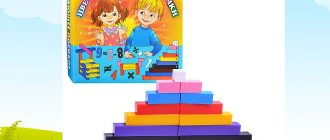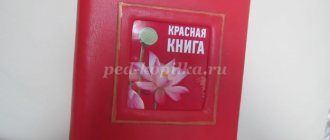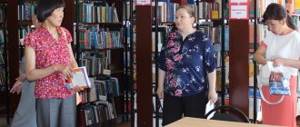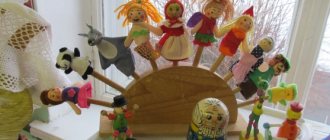Report “Project activities with children in preschool educational institutions”
Olga Nazarchuk
Report “Project activities with children in preschool educational institutions”
Report “ Project activities with children in preschool educational institutions ”
“Children themselves love to search and find. This is their strength. They always feel like Columbus
, never tire of being amazed by the many miracles of life. Perhaps the most difficult thing is to teach them to understand other people, who are not always like you, to know the depth of everyone. We overload children with books and impressions, and do not help them select the most important thing that leads to the depth of knowledge, to the depth of their own thoughts and creativity. Children, like plants, need much more freedom, the opportunity to know themselves.”
Freedom and the opportunity to know oneself, in my opinion, are provided by project activities , which allow the child not to feel “pressure”
adults.
Design technology makes preschoolers active participants in the educational and educational processes, becomes a tool for children’s self-development, because the experience of independent activity gained by a child in preschool age develops self-confidence in him, reduces anxiety when faced with new problems, creates the habit of independently looking for solutions, taking into account the existing conditions.
The peculiarity of the adult-children project is that children, parents, and teachers take part in the project
By solving various cognitive and practical problems together with adults and peers, children acquire the ability to doubt and think critically. The positive emotions experienced at the same time, surprise, joy from success, pride from the approval of adults - generate confidence in the child in his abilities and encourages a new search for knowledge. By accumulating creative experience, children, with the support of adults, can become authors of research, creative, gaming, and practice-oriented projects .
Collective experiences bring children closer to each other and to adults, and help improve the microclimate in the group. It can be noted that those teachers who actively use project technology in the upbringing and teaching of preschoolers, life activities in kindergarten organized according to it allow them to get to know the students better and penetrate into the inner world of the child.
In project activities, the child is faced with the need to demonstrate his independence, especially when it is necessary:
— state your goals, voice your ideas about yourself, eliminate your position in discussions with partners ( children and adults )
.
- speak openly and clearly about your difficulties, find their reasons, including for yourself.
— coordinate goals with others, without deviating from your own goals and be able to find a compromise.
The nature of the child’s participation in design is constantly changing . Thus, in early preschool age, he mainly observes the activities of adults , on average, he occasionally participates and masters the role of a partner, and in older age, he moves on to cooperation. Participation in an activity is communication on equal terms, where an adult does not have the privilege to indicate, control, or evaluate.
— Parents, due to their heavy workload and the need to earn money, do not have enough time to work with their own child, or we are faced with the incompetence of parents in matters of development and upbringing, so children are left alone with the TV or computer.
- Children, due to the great care of their parents and teachers, do not have developed independence and imagination.
— The programs that were previously used in kindergarten were aimed at developing children’s skills, abilities, and not creativity…
And if a child does not gain positive experience in creative activity , then in adulthood he may form the belief that this direction of development is inaccessible to him. But it is through creative abilities that a person can most fully reveal himself as a person.
Modern society places great demands on such personal qualities as creativity, the ability to search for knowledge, and self-development.
A developing society needs modernly educated, moral, creative people who can independently make responsible decisions in situations of choice, are capable of cooperation, and are characterized by mobility, dynamism, and constructiveness. (This is stated in the concept of early socio-economic development of the Russian Federation, which presents a modern model of education, focused on improving the quality of education). Having analyzed all the prerequisites, I was faced with the task of how to develop a child’s personality, his cognitive and creative abilities.
When organizing my work, I relied on theoretical and practical research by domestic teachers L. S. Kiseleva, T. A. Danilina, M. P. Zuikova, T. S. Lagoda, E. S. Evdokimova, V.N. Zhuravleva, T.G. Kazakova, selecting those that correspond to the views on the priority areas of preschool education and training at the present stage. They believe that design methods help :
— develop the creative abilities of preschoolers;
- make them active participants in the educational and educational processes.
Therefore, I believe that the project activity of preschoolers can be represented as a way of organizing the pedagogical process, based on the interaction between teacher and student, a way of interaction with the environment, and step-by-step practical activities to achieve a set goal.
The peculiarity of the adult-children project is that children, parents, and teachers take part in the project Joint collection of materials on the topic of educational activities, games, competitions, presentations reveal the creative abilities of children, involve parents in the educational process, which naturally affects the results.
This academic year I have introduced short-term educational projects “Autumn”
,
“Winter, New Year”
, which were aimed at developing environmental knowledge in children.
As part of "Autumn" project
Various events were held: OOD
“Conversation about autumn”
,
“Conversation about vegetables”
,
“Can vegetables be harmful to our health?”
,
“Vegetables and Fruits”
,
“Familiar Stranger Orange”
,
“The Invisible Wind”
;
exhibitions on the theme "Autumn"
.
During our walk, we played with autumn leaves, watched birds, insects, admired the beauty of flowers, and collected seeds. In our free time, we played didactic and board games the children “Seasons”
,
“Gardener”
,
“Gathering the Harvest”
,
“Riddle and Guess”
,
“Name the Signs of Autumn”
, etc.
In October, my children went on excursions around the territory of the kindergarten.
The children noticed the beauty of autumn nature. They found out which tree these fallen leaves came from. I liked the maple leaves the most. We brought bouquets of leaves to the group. But after a day's sleep we saw that the leaves had withered. Then I invited the children to create timeless beauty in memory of autumn. We created applications: “Mushrooms grew in a forest clearing”
,
“Dish with fruits and berries”
(team work, we drew on the themes
“Autumn Forest”
,
“It’s Raining”
, created a didactic game
“What autumn brought us
.” We made crafts from natural materials, sculpted vegetables, fruits, mushrooms:
“Make , what kind of vegetables and fruits you want for the store game
.
This project helped children develop the principles of environmental culture, a conscious, correct attitude towards objects and natural phenomena, children learned practical actions to protect nature;
children have a desire to communicate with nature and reflect their impressions through various activities .
The New Year was approaching, perhaps the most favorite children's holiday, shrouded in a fairy tale. And the children and I were faced with the task : “How can you decorate the group elegantly and unusually for the holiday?”
.
Problem found:
Children lacked independence, the ability to experiment, show imagination and artistic creativity. How to solve this problem?
And to solve this problem, I decided to involve all the parents of my group. I developed the project “Winter. New Year"
Project goal : To provide knowledge about living and inanimate nature in winter, to consolidate knowledge about the New Year holiday, to cultivate a love for the nature of the native land, and a caring attitude towards it.
The relevance of the project was to teach children to see the beauty of the world around them and improve the technical aspects of visual arts . Teach children to reveal their musical and creative abilities. Concretize children's ideas about winter, as a time of year, about the New Year holiday.
At the first preparatory stage, work was carried out with parents; they needed to select material on how to decorate a group, a Christmas tree, and collect illustrations on the theme “Winter”
.
A competition was announced for the most carved snowflake among parents. The music director wrote the script for the New Year's party. The children and I outlined an action plan for organizing the group: conversations were held, illustrations on the theme “Winter”
,
“New Year”
, and games were played.
Together with the children we composed and wrote a letter to Santa Claus. I spent time with the children drawing a “Holiday Christmas tree”
with appliqué elements. The children's creative works served as material for an exhibition in the parents' corner.
During the practical stage of our project , parents from the parent committee were invited to the group. They brought toys to the Christmas tree, made by the parents and their children . The toys were made of different materials: cotton wool, candy wrappers, serpentine, wrapping paper, very unusual and exciting.
At the third and final stage, we all decorated the Christmas tree together, and in the evening the parents decorated the group. They were also beautifully decorated: a board in the group on the theme “Winter”
, parent's corner, congratulations for parents.
The presentation of the joint activity project was a New Year's holiday, after which children and parents were left with vivid impressions. Analyzing the work done, I came to the conclusion that project activities of preschoolers are a unique means of ensuring cooperation between children and adults, a way of implementing a person-oriented approach to education.
In the future, I plan to continue working in this direction.
Based on all of the above, I believe the project method is a type of activity that allows you to purposefully develop children’s cognitive and creative abilities, independence, responsibility of the child to peers and adults, the opportunity to express and justify their opinions.
Report on student practice in kindergarten
The main form and type of reporting is a practice diary, with feedback from the internship site, and a written report from the student. A test with an assessment for practice is usually carried out in the form of students defending reports drawn up in accordance with the requirements of the work program of practice, based on an approved individual assignment for practice, taking into account the contents of the practice diary and feedback from the practice manager from the organization.
Need help getting an internship?
Find out the exact cost and receive a completed report by email!
How to develop speech in a child
Speech development is carried out mainly through play. Communication is also actively improved through the use of pictures.
Note! You can develop speech through home exercises.
Formation of children's speech in play activities
Games for the development of the lexical and grammatical structure of speech in preschoolers come in different types. The main requirement is to interest the children before starting classes, arouse a desire to participate, and then clearly outline the rules of the game and its intended outcome.
Games can be of various types:
- movable;
- role-playing;
- dramatization.
Theatrical performances using toys and dolls most actively help develop speech. With their help, children learn to speak in different voices, play roles, and get used to characters.
Sphere of pictures, cognitive speech development
“The Sphere of Pictures” is a collection of books that help parents and educators answer the question of how a child can develop speech. This series includes illustrated collections on various topics.
Illustration from the collection “Sphere of Pictures”
The collection includes books about the seasons, clothing items, school supplies, etc. These collections help educators and parents teach children oral speech.
How to teach your baby to speak correctly at home?
You can teach your child to speak correctly at home. This is possible with the help of games, massage, and articulation gymnastics. Before classes, you need to stand at the child’s eye level so that the child can see the adult, repeating after him.
Important! Facial massage should be performed carefully, using pads, lightly stroking the child’s skin. All actions must be accompanied by poems and stories.
Articulatory gymnastics is performed by repeating various actions with the lips, teeth, and puffing out the cheeks after an adult. Such exercises include the following:
- Balloon.
- Little engine.
- Smile.
- Horse.
- Mouth.
- Tongue.
Themed games for preschool educational institutions
In kindergarten, to improve communication skills, thematic games are used to develop the sound culture of speech. This list includes the following game types:
- catch and throw - for knowledge of colors;
- name the object - to know the characteristics of objects;
- choose words - for the ability to combine nouns with adjectives;
- name the word - to know what someone eats;
- choose an activity - on the ability to combine nouns with verbs;
- what happens... - the ability to identify objects by their characteristics;
- choose a part - a combination of animal body parts.
Drawing “Icicles are crying” - spring theme for younger groups
Note! Games can be on different topics, depending on the topic of the lesson.



